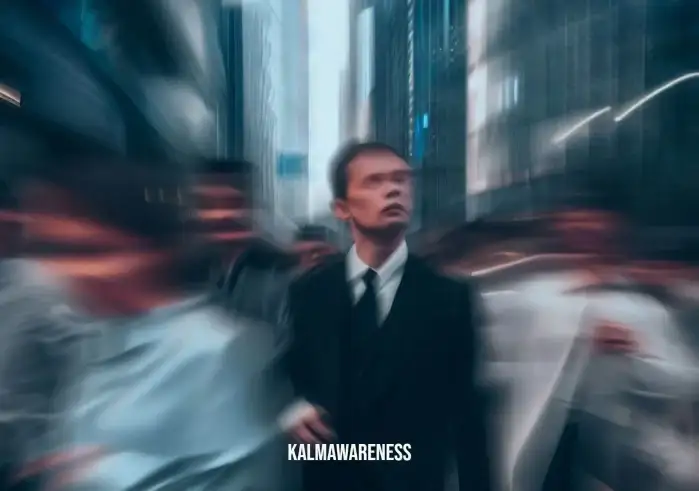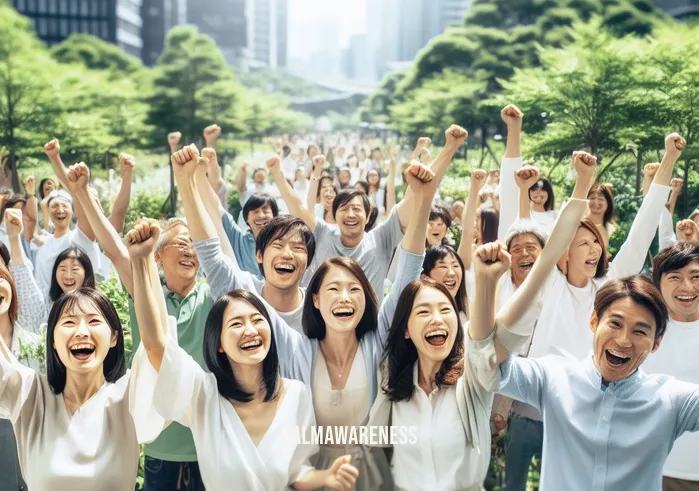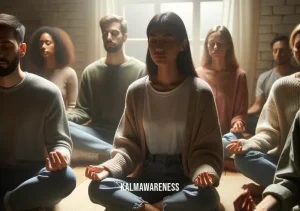The Ultimate Guide to Full Body Relaxation
Stress has become an inescapable part of our fast-paced world. Whether it’s the relentless pace of work, the ever-buzzing social media, or the constant race against time, it’s hard not to feel the pressure. But amidst this whirlwind, have you ever yearned for a state of calm and tranquility, a moment where all your tensions melt away, leaving you in a state of complete relaxation? Welcome to the world of full body relaxation, a blissful journey that will help you unwind and rejuvenate.
What is Full Body Relaxation?
Full body relaxation is a practice that involves calming the mind, relaxing the muscles, and aligning the breath to reach a state of deep tranquility. It is more than just letting go of physical tension; it’s about achieving harmony between the mind and the body, promoting overall wellbeing.
Full body relaxation helps you to manage stress, improve focus and promotes better sleep.
In our guide, we will explore various techniques to achieve full body relaxation, from mindful movement to guided meditations. So, sit back, breathe deep, and let’s dive into the world of tranquility and calm.
The Power of Mindful Movement
Mindful movement integrates mindfulness and physical activity for enhanced relaxation. Rather than focusing solely on the physical aspect, mindful movement brings an awareness to your body and its movements, enabling you to connect more deeply with yourself.
Some popular forms of mindful movement include yoga and tai chi. However, you can incorporate mindfulness into any activity where you can concentrate on your body’s movements, such as walking or dancing.
Experience the Calm with Guided Meditations
Guided meditations provide a structured approach to achieving full body relaxation. In these sessions, a narrator guides you through the relaxation process, assisting you in visualizing calming images or focusing on specific parts of your body.
If you’re new to this practice, the Free Guided Meditations from UCLA is a wonderful place to start. They offer a variety of meditations for beginners and experienced practitioners alike.
Additionally, we have an assortment of specific meditations like the Forest Guided Meditation which can transport you to a serene forest, aiding in full body relaxation.
Embrace the Sound Waves: Frequencies for Meditation
Did you know that sound can influence your mood and state of mind? Binaural beats, a type of sound wave therapy, can help promote relaxation, reduce anxiety, and enhance focus. Frequencies for meditation provide a unique path to achieving full body relaxation.
Binaural beats use the power of sound to help your mind achieve a state of deep relaxation.
As you embark on your journey towards full body relaxation, remember to approach it with an open mind. Techniques that work for others may not work for you. Explore, experiment, and most importantly, enjoy the process.
We invite you to continue to the next part of this article where we delve deeper into full body relaxation techniques. Discover the art of breathing for relaxation, unravel the importance of sleep, and learn how to create a calm environment conducive to relaxation. Join us as we continue our journey towards tranquility and calm.
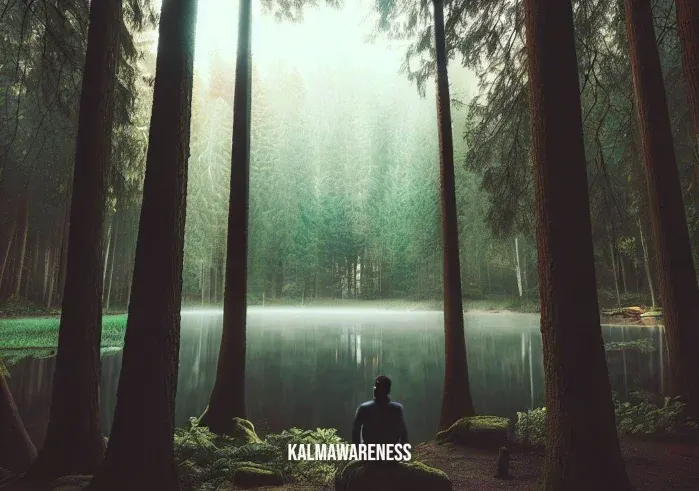
Breathing Your Way to Full Body Relaxation
The power of breath is transformative. It is an essential part of our existence, and when used mindfully, it can pave the way to achieving full body relaxation. Breathing exercises offer an effective, convenient, and natural method for reducing stress, anxiety, and achieving a state of calm.
The Art of Mindful Breathing
Whole body breathing is a potent method to achieve a state of relaxation. It involves becoming aware of your breath’s journey as it enters and exits your body, focusing on the sensations it creates. Mindful breathing allows you to slow down, focus your mind, and bring tranquility to your entire body.
Whole body breathing is a doorway to mindfulness, facilitating full body relaxation.
Breathing Techniques for Full Body Relaxation
- Diaphragmatic Breathing: Also known as deep breathing, this technique involves breathing deeply into your diaphragm rather than shallowly into your chest. It is highly beneficial for full body relaxation.
- 4-7-8 Breathing Technique: This breathing method involves inhaling for a count of 4, holding the breath for a count of 7, and then exhaling for a count of 8. It’s a simple but powerful tool for calming the mind and body.
- Box Breathing: Also known as square breathing, it involves inhaling, holding the breath, exhaling, and then holding the breath again, each for a count of four. This technique can induce a state of calm, helping you relax and refocus.
Practicing these breathing techniques regularly can significantly enhance your journey towards full body relaxation.
Understanding the Role of Sleep in Full Body Relaxation
Good quality sleep is vital for full body relaxation. A restless mind often leads to restless sleep, making it hard for your body to relax fully. On the other hand, sleep meditation can help you calm your mind, facilitating peaceful sleep and leading to full body relaxation.
Consider exploring the sleep fast meditation on our website. It is specifically designed to help you fall asleep quickly and wake up rejuvenated.
Creating a Relaxing Environment
Your environment significantly influences your ability to relax fully. Here are some tips to create a space that fosters calm and relaxation:
- Soothing Sounds: Use frequencies for sleep to create a calm atmosphere. The soothing sounds can help you relax and sleep better.
- Dim Lighting: Soft, warm lighting can help create a relaxing ambiance, inducing a sense of calm and relaxation.
- Comfortable Seating: Invest in comfortable seating or bedding that supports your body and makes relaxation easier.
- Cleanliness: A clean, decluttered space can help clear your mind, promoting relaxation.
- Nature: Incorporating elements of nature, such as plants or a water fountain, can have a calming effect, promoting relaxation.
| Tips for Full Body Relaxation | Techniques Involved | Relevant Links |
|---|---|---|
| Mindful Breathing | Whole body breathing, Diaphragmatic breathing, 4-7-8 Breathing Technique, Box Breathing | Whole Body Breathing |
| Good Quality Sleep | Sleep Meditation | Sleep Fast Meditation, Sleep Meditation Female Voice Rain |
| Creating a Relaxing Environment | Use soothing sounds, dim lighting, comfortable seating, cleanliness, and elements of nature | Frequencies for Sleep |
We invite you to continue to the next part of this article where we will explore more unique and effective methods for achieving full body relaxation. Dive into the role of mindfulness practices and learn about different types of meditations tailored for relaxation. Join us as we continue our tranquil journey towards full body relaxation.
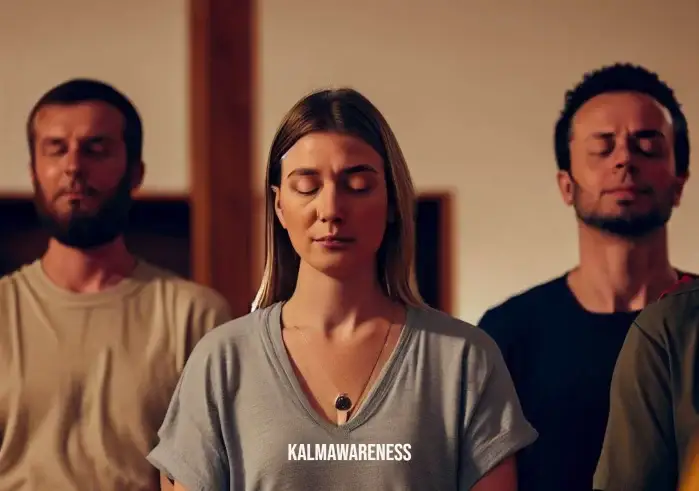
The Role of Mindfulness in Achieving Full Body Relaxation
Mindfulness, a practice with roots in ancient Buddhist teachings, has become increasingly popular in the western world due to its effectiveness in stress reduction and full body relaxation. In essence, mindfulness involves being fully present in the moment, fully engaged in whatever you are doing.
“Mindfulness is a way of befriending ourselves and our experience.” – Jon Kabat-Zinn
At its core, mindfulness is about observing your thoughts and feelings without judgment. You are not attempting to suppress or deny what you are experiencing but rather acknowledging and accepting it as part of your current reality. By adopting mindfulness, you cultivate a sense of full body relaxation.
Meditation and Full Body Relaxation
While meditation has been practiced for thousands of years, it’s only recently gained popularity for its role in promoting relaxation and well-being. Meditation, specifically guided meditations, can play a crucial role in achieving full body relaxation. They provide a roadmap to a peaceful state, where the body is relaxed, and the mind is tranquil.
The goal of meditation is not to control your thoughts, but rather to stop them from controlling you. This is especially true with mindful movement meditation sleep, where movement and breath are united in a dance of mindfulness.
“Meditation is like a gym in which you develop the powerful mental muscles of calm and insight.” – Ajahn Brahm
Mindful Movement: A Path to Relaxation
Mindful movement, an integral part of many mindfulness practices, is another effective method for achieving full body relaxation. It involves moving your body while maintaining awareness of your physical sensations, thoughts, and surroundings.
This could take many forms, from yoga and Tai Chi to mindful walking or even simply stretching your body with full awareness. Mindful movement can effectively unite mind and body, promoting deep relaxation.
“In mindful movement, we are giving the body the attention it craves and deserves.” – Thich Nhat Hanh
The Power of Visualization for Full Body Relaxation
Visualization, or guided imagery, is a powerful tool that can aid in relaxation and stress reduction. It involves using your imagination to create a peaceful and calming scenario or place in your mind. For example, forest meditation can be a great way to visualize being in a tranquil, serene forest, allowing you to escape the stresses of daily life and achieve full body relaxation.
“Visualize this thing that you want, see it, feel it, believe in it. Make your mental blueprint, and begin to build.” – Robert Collier
This brings us to the end of this part of our exploration into full body relaxation. In the next part, we will delve deeper into the concept of self-care and how it contributes to relaxation. We will also look at other practices that can help you relax, from clearing energy meditation to rituals for new beginnings. Join us in the next chapter as we continue this journey towards relaxation and tranquility.
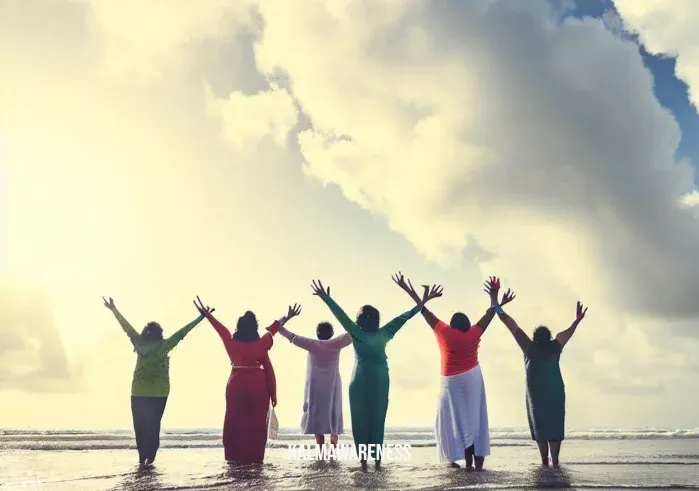
Self-Care and Full Body Relaxation
Self-care, at its essence, is any activity we purposefully carry out to care for our mental, emotional, and physical health. It’s an essential practice that contributes to maintaining balance and achieving full body relaxation. Though it’s a simple concept, it’s something we often overlook.
“Talk to yourself like you would to someone you love.” – Brené Brown
In the busyness of modern life, self-care often takes a backseat. But prioritizing self-care and weaving moments of relaxation into daily life can transform our overall wellbeing.
Rituals for New Beginnings: A Self-Care Practice
Creating rituals can be a beautiful way to establish self-care habits that lead to relaxation. Especially when these are rituals for new beginnings, they can serve as powerful markers of change, helping us transition into new phases of our lives with grace and tranquility.
“A daily ritual is a way of saying, I’m voting for myself; I’m taking care of myself.” – Mariel Hemingway
Balancing Chakras for Full Body Relaxation
Another essential practice in the realm of self-care and relaxation is balancing chakras, the energy centers in our bodies. Aligning these energy centers can lead to a sense of peace and full body relaxation.
Here is a simple table that highlights five main chakras, their colors, and how balancing them contributes to relaxation:
| Chakra | Color | Benefit |
|---|---|---|
| Root Chakra | Red | Promotes feelings of safety and grounding |
| Sacral Chakra | Orange | Boosts creativity and sexual energy |
| Solar Plexus Chakra | Yellow | Increases self-confidence and personal power |
| Heart Chakra | Green | Enhances love and compassion |
| Throat Chakra | Blue | Fosters communication and expression |
Meditation Preparation: Key to Effective Relaxation
Proper meditation preparation can enhance your meditation experience and its relaxation benefits. This could include creating a quiet and serene environment, choosing a comfortable sitting position, and setting a clear intention for your meditation.
“Every morning we are born again. What we do today matters most.” – Buddha
Full Body Relaxation through Sleep
Sleep, an often-overlooked aspect of self-care, is a cornerstone of full body relaxation. Techniques such as sleep fast meditation can lead to better quality sleep, allowing your body to restore and rejuvenate itself.
“Sleep is the best meditation.” – Dalai Lama
As we conclude this part of our exploration of full body relaxation, we hope you feel empowered and inspired to incorporate these self-care practices into your life. In the next chapter, we’ll delve into other dimensions of relaxation, including sound therapy and nature’s influence on relaxation. We’ll also discuss the significance of clearing negative energy for achieving relaxation. Stay tuned for more insights and practices to aid you on your journey towards tranquility.
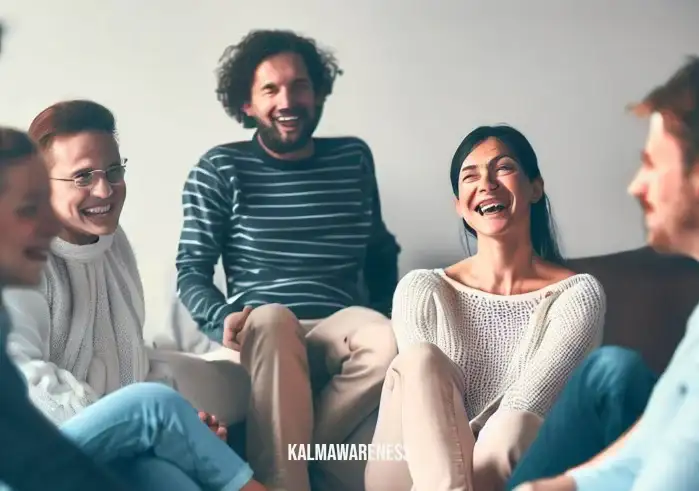
Exploring Sound Therapy and Nature for Full Body Relaxation
When we think about achieving full body relaxation, we often focus on activities like yoga, meditation, and deep breathing. But what about the therapeutic effects of sound and nature? The universe around us is filled with elements that can contribute to a state of tranquility and peace. In this chapter, we’ll delve into these often-overlooked resources for relaxation.
The Harmonious World of Sound Therapy
“The earth has music for those who listen.” – George Santayana
Sound therapy harnesses the power of sound frequencies to stimulate our body’s healing processes and promote relaxation. Different sounds resonate with our body in distinct ways, creating vibrational patterns that can have profound effects on our well-being.
One popular method is the use of frequencies for meditation. These are specific sound waves that, when listened to during meditation, can facilitate a deeper state of relaxation and focus. Similarly, frequencies for sleep can help calm the mind, guiding it towards a state of peaceful sleep.
The Healing Power of Nature
“In every walk with nature, one receives far more than he seeks.” – John Muir
Nature has an innate power to heal and relax us. The simple act of being in a natural setting, or even viewing scenes of nature, reduces anger, fear, stress, and increases pleasant feelings. This phenomenon is the basis of a practice known as forest meditation.
Forest meditation involves spending time in a forest setting and utilizing the calming properties of nature to facilitate meditation. Techniques like forest bathing meditation or a forest guided meditation can help you engage with nature in a meaningful way, promoting full body relaxation and stress relief.
Clearing Negative Energy
“The energy of the mind is the essence of life.” – Aristotle
Negative energy can obstruct our path to relaxation and peace. Practices like clearing energy meditation or cleansing negative karma can aid in dissipating negative energy, paving the way for positivity and peace.
One method for cleansing bad energy is ancestral clearing. This technique focuses on healing inherited emotional issues or patterns, creating space for positive energy to flow.
Finding Calm Through Mindful Movements
“The body benefits from movement, and the mind benefits from stillness.” – Sakyong Mipham
The practice of mindful movement, an activity that combines movement and mindfulness, is another avenue to full body relaxation. This could involve yoga, tai chi, or simply walking with awareness. Our guide on mindful movement meditation sleep provides insights on how to integrate this practice into your routine for improved sleep quality.
As we conclude this chapter, we hope you’ve gained a deeper understanding of how sound therapy, nature, energy clearing, and mindful movement can contribute to full body relaxation. In the next chapter, we’ll dive into the relationship between mindfulness and relaxation, exploring practices like mindful coloring, informal meditation, and more. Join us as we continue our journey into tranquility and peace.
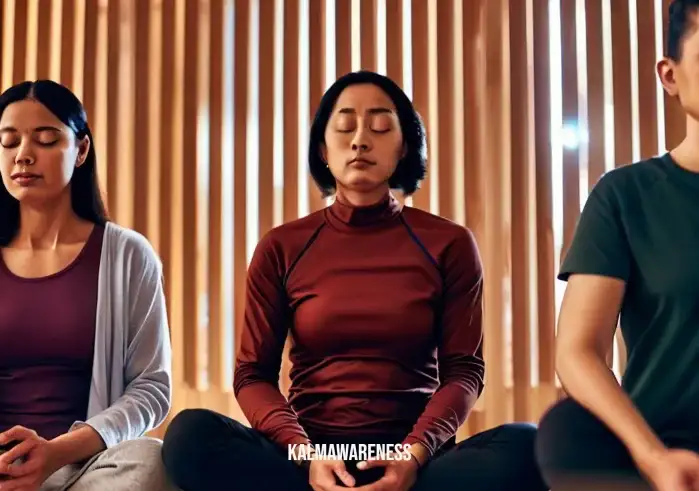
Embracing Art and Creative Expressions for Full Body Relaxation
As we journey toward the pursuit of full body relaxation, we’ve traversed various methods, from mindful movements to the healing power of sound and nature. In this final chapter, we shall explore the realm of creativity and artistic expression, unveiling their tranquil qualities and potentials to be a part of your relaxation routine. As Vincent Van Gogh said, “I dream my painting, and then I paint my dream,” art can often become a sanctuary for peace and tranquility.
Art Therapy
“Every artist was first an amateur.” – Ralph Waldo Emerson
Art therapy is a creative method of expression used as a therapeutic technique. It combines the creative process and the outcomes of artistic self-expression with psychological theories to improve mental health. Engaging in art therapy can lead to stress relief and a form of full body relaxation, as it helps channel emotions and thoughts into a creative output.
Mindful Coloring
“Life is the art of drawing without an eraser.” – John W. Gardner
Often considered a part of art therapy, mindful coloring is an activity that lets your creativity flow while centering your mind. Our mindful coloring guide provides various techniques and methods to enhance your coloring experience. It’s a meditative practice that allows the brain to focus on the present moment and relax, driving away anxiety and stress.
Dance and Movement Therapy
“Dance is the hidden language of the soul.” – Martha Graham
One of the more dynamic forms of creative expression, dance can be therapeutic, helping us explore emotions and promoting well-being. Dance and movement therapy incorporates dance, movement, and psychology to support the intellectual, emotional, and motor functions of the body. Engaging in such an activity can lead to stress relief and a feeling of full body relaxation.
Music Therapy
“Music gives a soul to the universe, wings to the mind, flight to the imagination, and life to everything.” – Plato
Music has a profound impact on our mood and emotions. It is no surprise that music therapy has become a popular approach to mental wellness. This type of therapy uses music interventions to accomplish individualized goals within a therapeutic relationship by a credentialed professional. This might involve creating, singing, moving to, or merely listening to music.
The Art of Cooking
“Cooking is at once child’s play and adult joy. And cooking done with care is an act of love.” – Craig Claiborne
Last but not least, the art of cooking. Engaging in the creative process of preparing food can be a therapeutic experience. Our guide on mindful cooking presents a unique approach to cooking, turning it into a mindfulness practice that aids in stress reduction and relaxation.
As we come to the end of our journey exploring the various avenues to achieving full body relaxation, we hope you’ve discovered methods that resonate with you and align with your lifestyle. Remember, the goal isn’t perfection but practice. Relaxation is a journey, not a destination. Each step, each breath, each moment is part of this journey. Embrace it, learn from it, and find peace in it.
Thank you for joining us on this exploration. We invite you to continue your journey with other enriching topics in our wellness magazine. May you find tranquility, peace, and full body relaxation in every moment of your life.
